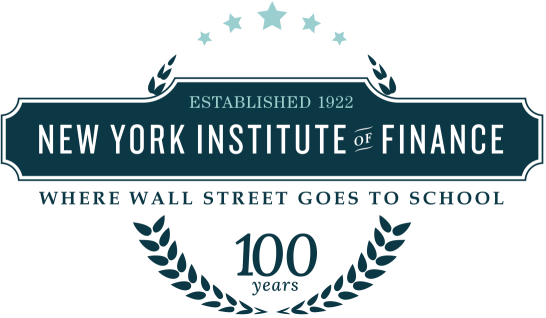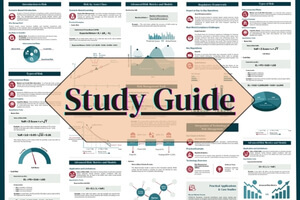Risk Management Professional Certificate
Develop a comprehensive survey of the practice of Risk Management. The major types of risk are identified, risk management tools and techniques are reviewed and financial regulation is covered. Delegates will work through the annual risk report of a publicly traded financial institution. A number of case studies are analyzed to illustrate key principles of risk measurement and management.
CPE Credits: 35
Prerequisite knowledge:
- Basic MS Excel skills
- Basic probability and statistics
This Professional Certificate comprises the following courses:
- Introduction to Risk Management (Day 1)
- Measuring Risk: Equity, Fixed Income, Derivatives and FX (Day 2)
- Risk Management Tools and Practices (Day 3)
- Introduction to Stress Testing (Day 4)
- Risk Regulation (Day 5)
Download course curriculum here
Watch our video to learn more about the course:
Module 1: Introduction
- A definition of risk
- Sources of risk
- Why do firms manage risk?
- Risk measurement vs risk management - Case Study: Goldman Sachs Manages Subprime Risk, 2007
Module 2: Taxonomy of Risks
- Market risk
- Credit risk
- Operational Risk
- Liquidity risk - Case Study: Northern Rock’s Liquidity Risk, 2007
- Systemic risk
Module 3: Money and Capital Markets: Participants and Regulators
- Money and capital markets
- US Federal and State regulatory structure
- Foreign regulatory structures - United Kingdom & European Union
Module 4: Concepts in Risk Management
- Risk factors
- Risk measures - Value at risk (VaR), Expected shortfall (ES) or Conditional VaR (CVaR), Coherence of risk measures
- Scenario analysis and stress testing
Module 1: Risk by Asset Class
- Equity - Idiosyncratic vs systematic risk, Impact of correlation on portfolio risk, Beta
- Fixed Income - Bond prices and yields, Duration and Convexity
- Derivatives - Forwards and Futures, Options, Greeks
- Credit - Rating agencies, Default probabilities, Credit spreads
- Foreign Exchange - Spot and Forward Rates, Covered arbitrage
- Commodities - Spot and Forward prices
Module 2: Portfolio Risk Measurement
- The role of correlation in portfolio risk
- Measuring risk with historical data
- Measuring risk with models
- Application: Market risk measurement for an equity portfolio
Module 3: Risk Reporting
- Structure of a risk report - Risk by risk factor, Risk by business unit, Component risk vs overall risk, Comparing P/L, VaR and ES
- Case Study: Deutsche Bank Annual Risk Report
Module 1: Risk Management Tools and Practices
- Risk management tools - Index futures, Equity swaps, Options
- Exposure and loss limits
Module 2: Asset-Liability Management
- ALM governance
- Interest rate risk on the balance sheet - Funding / rate gaps, Duration gaps, Balance sheet immunization
- Liquidity risk on the balance sheet
- Credit risk on the balance sheet
- Market value of equity at risk
- Securitization: An ALM tool
Module 3: Operational Risk and Integrated Risk Management
- What is operational risk? - Internal fraud, External fraud, Employment practices, Obligations to clients
- Examples of operational risk failures - Rogue Trading: Allied Irish Bank, 2002, Customer Business: Enron, 2001, Rogue Trading at Societe Generale, 2008)
- Operational Value at Risk
- Integrated risk management - Economic capital, risk capital and regulatory capital
- Risk Governance: Best practices
Module 1: Risk Regulation
- Why regulation? - Systemic Risk, A brief history of regulation
- Impact of the subprime crisis on regulation
Module 2: The Basel Capital Accords
- Basel I - 1988 BIS Accord, Cooke ratio,1996 Amendment
- Basel II and Solvency II - Three pillars of Basel II, Credit risk capital under Basel II
- Basel 2.5, Basel III and Dodd-Frank
Module 3: Overview of Regulatory Regimes
- US Federal and State regulators
- Financial regulation in the United Kingdom, European Union and Asia
- Regulation in emerging economies
Module 1: Stress Testing
- Scenario analysis: Historical vs hypothetical
- Algorithmic / mechanical stress tests - Factor push, Maximum loss
- History of stress testing at financial institutions
- Reverse stress testing
Module 2: US Regulatory Stress Tests
- 2009 Supervisory Capital Assessment Program (SCAP)
- Dodd-Frank Act Stress Test (DFAST) and Federal Reserve Comprehensive Capital Analysis and Review (CCAR) - Methodology, Scenarios, Applying scenarios – from scenarios to the capital ratios, Scope of work, Implications for capital and the business model of a financial intermediary
- Critique: Do the CCAR/DFAST stress tests reduce risk?
Module 3: Regulatory Stress Testing in other Jurisdictions
- UK: Bank of England (PRA) stress tests
- EU: European Banking Authority (EBA) stress tests
- Japan, Hong Kong, Sweden, Ireland
Module 4: Desk Ready Skills Knowledge Check

